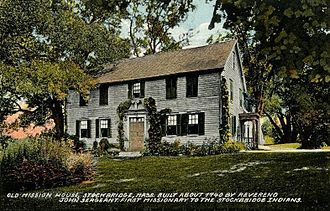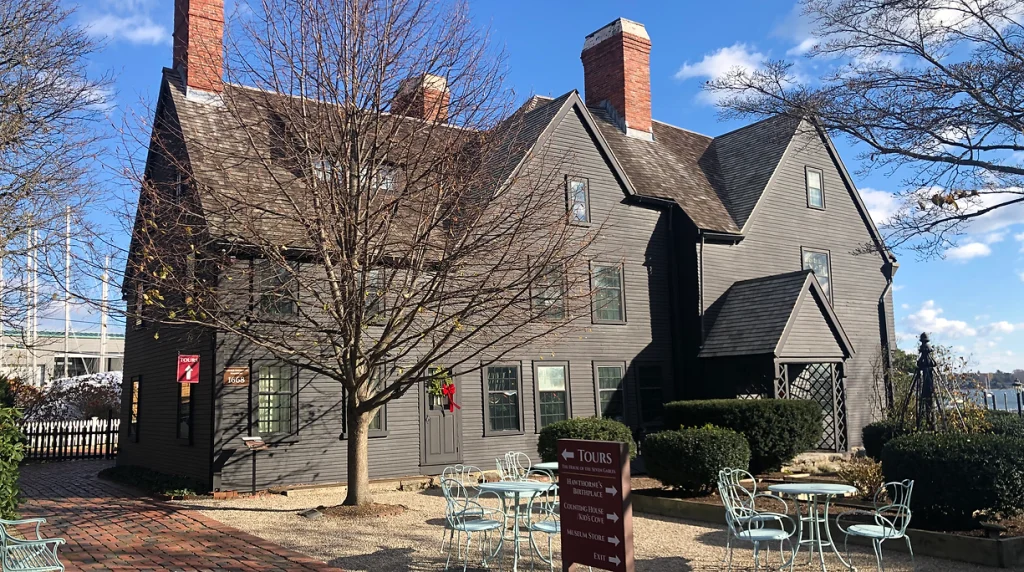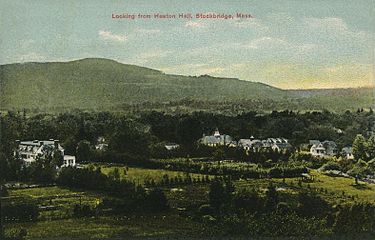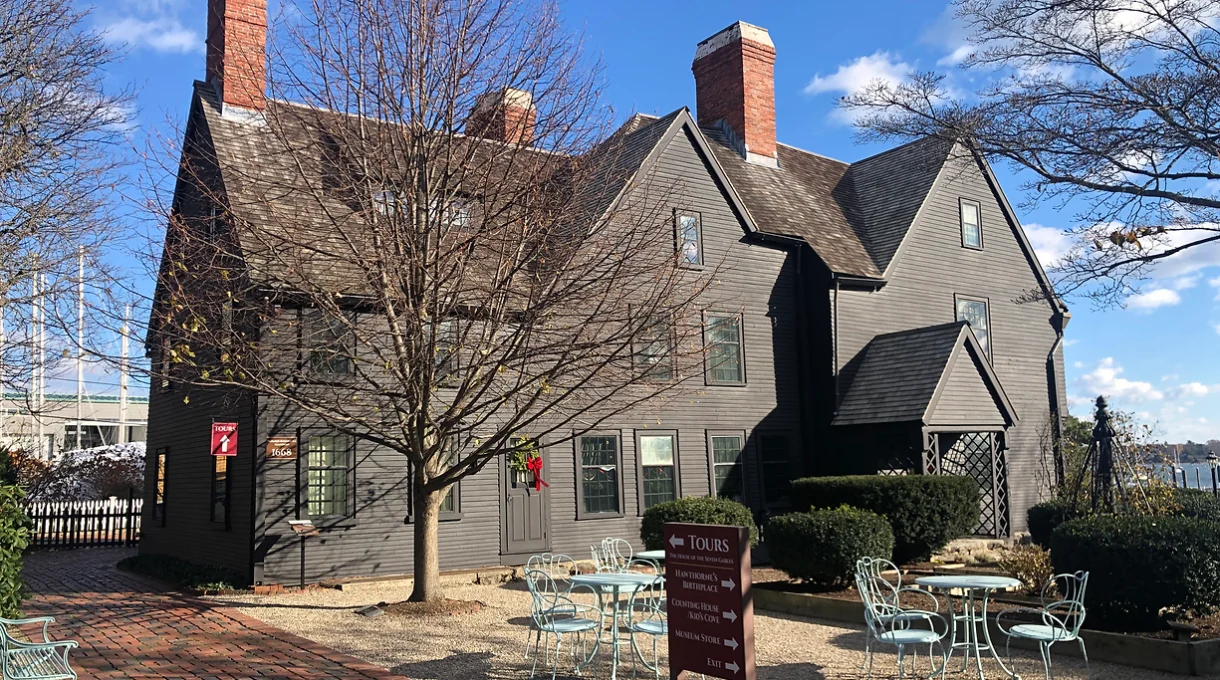MassHistPres Digest, Vol 75, Issue 3

Today’s Topics:
1. Ordinance concerning demolition by neglect (Dorothy Clark)
2. Re: Ordinance concerning demolition by neglect
Hello list readers,
I am wondering what, if any, communities in Massachusetts have ordinances in place that protect historic properties from demolition by neglect.
*Dorothy Clark*
Assistant Survey Director
Boston Landmarks Commission
Office of Historic Preservation
<https://www.boston.gov/departments/landmarks-commission>
Office: (617) 635-2912
https://www.facebook.com/BostonLandmarks/> | Twitter
<https://twitter.com/bostonlandmarks>
<https://www.instagram.com/bostonlandmarks/>* |
Newsletter
Yes! Stockbridge has the most advanced ordinance in the state protecting properties from demolition by neglect.

See the article on this ordinance below.
The author of the ordinance, Peter Williams, may be contacted at peter.chase.williams@gmail.com
Ted Andrews
Shaker Farm
<https://forum.savingplaces.org/home>
National Trust for Historic Place

A Strong Demolition Delay Bylaw in Stockbridge
By Peter C. Williams
Stockbridge, Massachusetts, located in the Berkshire Hills in the western part of the state, is best known as the hometown of Norman Rockwell, who famously painted the town’s Main Street, whose historic buildings are largely unchanged in over a century.
Stockbridge, however, has an even deeper and richer history. With the land originally inhabited by the
<https://www.mohican.com/our-history/>
Stockbridge-Munsee Band of Mohicans, the town’s colonial charter was implemented in 1737 as a mission to its
Native American inhabitants—the circa 1750 Mission House still stands on Main Street. Over the centuries Stockbridge went through multiple transitions from a largely agricultural colonial village, to a partially industrialized mid-19th century town, a retreat for artists, writers and seasonal Gilded Age “cottagers,” and is currently ranked as “ <https://bigseventravel.com/americas-most-charming-small-towns/> the most charming small town in America.” Historic buildings representing all of these eras survive in Stockbridge and are critical to the town’s character.
“Home for Christmas (Stockbridge Main Street at Christmas), 1967” by Norman Rockwell. Illustration for McCall’s, December 1967. A part of the Norman Rockwell Museum Collection and the Norman Rockwell Art Collection Trust | Credit: ©1967 Licensed by Norman Rockwell Family Agency. All rights reserved

Despite the rich history represented in many buildings throughout Stockbridge, until 2006 the town had no legal protections whatsoever for that legacy. Legislative government in Stockbridge, as in many New England towns, is accomplished via town meetings in which all town voters are eligible to participate and to vote. Prior to 2006 several attempts at town meetings to adopt an historic district bylaw to protect the buildings in the center of town were defeated, as some voters expressed concern about the strict regulation that can accompany historic district designations.
The Solution: A Uniquely Strong Demolition Delay Bylaw
(Editor’s Note: Visit the town website
<https://stockbridge-ma.gov/by-laws/>
download the bylaws. The demolition delay is Article XXII, on pages 35-39)
In part to address those concerns, a group of townspeople, working with town counsel and with the support of town government leaders, crafted and put before the town meeting a different form of protection based upon the demolition delay bylaws that are fairly common in Massachusetts as well as other states. But importantly, the group modified the standard demolition delay language to make it stronger in two respects: (1) depending on the circumstances, the demolition delay could last indefinitely, not just for six to eighteen months as is common in other such bylaws, and (2) the bylaw covers “substantial alterations” in addition to proposed demolitions of historic buildings.
The latter element was added in part to prevent attempts to circumvent the demolition-delay provisions by styling a virtual demolition as merely an “alteration.” This proposal was approved by the state’s Attorney General (a prerequisite for such a bylaw in Massachusetts) and adopted by more than the required two-thirds vote at the 2006 town meeting. Although demolition delay covered the entire town, and thus was geographically broader than a historic district , the new bylaw reassured town voters by not providing for historic-district levels of strict controls such as over paint color or window type.
The mechanics of the bylaw initially are typical of other demolition delay bylaws in that a regulatory body—in this case a “Historic Preservation Commission” created to administer the bylaw—first makes a determination whether a building proposed to be demolished is “historic;” standard criteria—such as listing or eligible listing on the National Register, or having historical or architectural significance—govern this determination. If the building is deemed historic, then demolition is prohibited, and in this case not just for the common six- to eighteen-month period. Instead, demolition is barred indefinitely unless the owner can make one of two showings: (a) there is no reasonable likelihood that any other entity or person would purchase and save the building, or (b) the owner for at least 12 months has made “continuing, bona fide and reasonable efforts to locate a purchaser” willing to purchase and save the building—in effect creating a 12 month limit if the owner markets the property as specified. The bylaw details what constitutes such “reasonable efforts,” including obtaining an appraisal and a broker who markets the property in a customary manner over the 12-month period.
Success in Practice
Since the bylaw’s adoption in 2006, it has been very successful in preventing demolition of historic buildings throughout Stockbridge in two ways. First, the bylaw is widely known in Town and by real estate agents, and so in many cases possible demolition of historic buildings is deterred from the outset and never comes before the Historic Preservation Commission.
Second, when petitions are brought for demolition of buildings, two outcomes are common: (a) the petitioner gives up the demolition plan once the building is identified as historic, or (b) the building is placed on the market and is purchased by a party willing to save the building.
An example of changing perspective occurred recently with respect to a particularly notable historic building in town, a Gilded Age summer home built in 1906 known as Weybourne Hill. Not only had the house been designed by a noted architect, but also it has been inhabited by a series of important and historic Stockbridge residents, including civil rights activists, internationally known artists, and an international film star. The new owners who had applied to demolish the house were unaware of much of its history, and, upon receiving a detailed summary of the history along with the Preservation Commission’s decision delaying demolition under the bylaw, they abandoned plans for demolition and instead are now restoring the house in a historically sensitive manner.
An example of the second scenario noted above, where an owner wishing to demolish places the house on the market to see if a willing buyer/preserver will come forward, occurred recently with respect to a house listed on the National Register. The house was part of the Shadow Brook Farm National Register District, a group of residential, agricultural and livestock buildings that once served a large Gilded Age mansion built on the hill above the Farm. The Farm buildings are all in the Tudor style of the mansion; many were converted in the 1960s into a campus for a local independent school.
The house in question, however, once a caretaker cottage, was individually owned, and the owner wished to demolish it in favor of new construction, even hiring a large backhoe which appeared on the site soon after he had disconnected all utilities and removed windows and some interior features. The demolition was temporarily halted by the town conservation commission—the home borders Shadow Brook—and the owner then went through the bylaw process, eventually placing the cottage on the market to see if a preservation-minded buyer would come forward. Such a buyer did appear, and the cottage is now in the final stages of a historically sympathetic restoration, including reproduction of the historic windows.
The Stockbridge demolition bylaw is not a panacea. One observed problem has been “demolition by neglect,” particularly of vernacular structures like barns or very modest residences, as the bylaw does not regulate maintenance. However, overall, the bylaw does appear to be much more effective than traditional demolition-delay bylaws, which many would-be demolishers seem to treat as mere speed bumps on the way to demolition of historic assets that are of irreplaceable value to the community at large.
Peter C. Williams, a retired attorney, is a resident of Stockbridge, Massachusetts and a longtime officer of its Historical and Historic Preservation Commissions.

